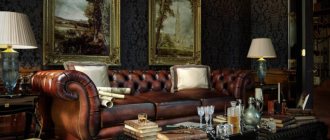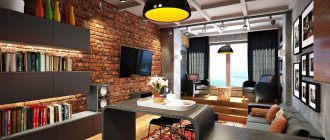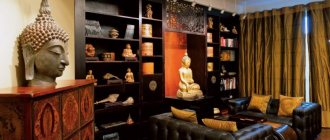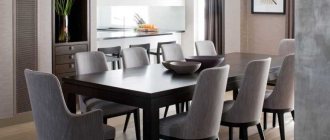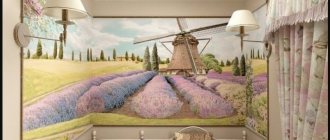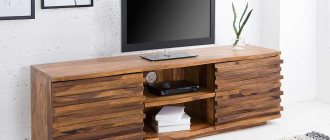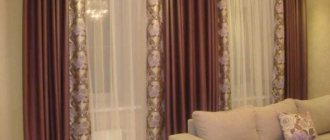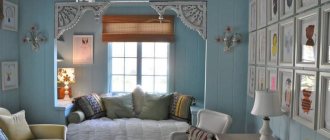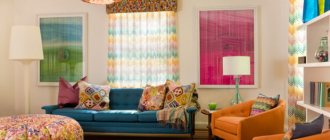Features of Gothic interior styling
The Gothic style of the interior has a kind of mysticism - stained glass windows, striking in their multicolored colors, on the huge windows, pointed vaults. The main distinctive feature of the style is vertical elements, there are many of them, as if the entire space is rushing upward, due to which severity and majesty are achieved. Among other important elements that distinguish the interior in the Gothic style:
- very large windows;
- abundance of light;
- complex forms of vaults.
Gothic style combines aristocratic elegance with sophistication and grandeur. Since the Middle Ages, the style has undergone many changes, it received a new life in the 19th-20th centuries, but even now its features can be seen in the interior design of expensive restaurants, hotels and some country houses.
The style will allow you to create a uniquely unique interior, but it is unlikely to be suitable for small-sized “Khrushchev” buildings and panel high-rise buildings - Gothic style requires space, height and an abundance of light.
And in a country mansion or apartment there is an opportunity to expand, but even here you should not reproduce the Gothic interior in its original form - it can turn out to be a mystically gloomy room. Give preference to stylization in the Gothic spirit, choosing the main features to emphasize the luxury of the interior.
Modern gothic interior
First of all, the Gothic style in the interior is space and a lot of light. Therefore, it is better to choose spacious rooms with high ceilings for styling. If you initially planned to design a cottage in the Gothic style, pay attention to the windows - they should be high, ending at the top with an arch with pointed points. The shape of the windows is elongated, vertical.
For interior decoration, only natural materials are proposed, among which three should be given preference:
- a natural stone;
- tree;
- metal.
Plastic and artificial materials are not for the Gothic. Leave them to modernity, and here marble and expensive types of wood will be appropriate - for furniture that will be decorated with carvings. It can be decorated with gilding, because the main thing in a Gothic interior is chic and luxury.
The correct choice of materials and distribution of all decorative elements will create a living room in the style of medieval castles, and a bedroom in the style of royal chambers.
Modern interior
Another modern interior with this design involves the use of pseudo-columns or artificial stucco. Stained glass windows can also be considered as a convention. They are made only in the upper part of the window, or are limited to stained glass decoration on doors and sideboards.
Spiral staircases in multi-level apartments and houses are still a distinctive feature of medieval design. And imitation animal skins on the floor and walls is no longer considered one of the classic canons of style.
Walls
In one living area, the walls can be decorated differently. For example, in the living room the space is divided into a seating area, a fireplace and a reading corner. Wooden wall coverings are suitable for all areas except those where the fireplace is installed. In the fireplace area, stonework is placed on the wall. A library in this style can be decorated with leather inserts on the walls, and the rest of the rooms can be decorated with relief plaster or niches stretched up to the ceiling.
Lancet shapes and cruciform ceilings are the hallmarks of the style. They originated during the time of the Crusaders and are closely related to the shape of the Catholic cross. Therefore, the walls in the room where the Gothic design is planned must be of sufficient height. Otherwise, the style will resemble oriental rather than gothic design.
Ceiling
If there is a lot of controversy about walls in the Gothic style, then when it comes to the design of ceilings, designers show greater agreement. All ceilings must be high. The castle version of the ceiling involves a large number of vaults, but a restaurant or public hall can be decorated this way. In the apartment, the ceiling in the Gothic style is made using drawings, stucco molding and ornaments, examples of which can be seen in the works of artists of the Middle Ages.
The rib vault is the main technique for Gothic stylization in a residential area. Broken lines, interlacing arches and height differences well characterize the ceiling in Gothic design.
Floor
Using the medieval method of flooring, you cannot rely on modern materials. So neo-Gothic implies the use of wood and stone on the floor. The entire coating pattern must be clear and symmetrical. Blurred lines and rounded shapes are not welcome here.
The main feature of the Gothic floor is illusory perspective. Even when laying floors, contrasting colors are used to achieve a labyrinth effect.
Windows and doors
Gothic country houses are more reminiscent of a castle than a private cottage. There, windows and doors are of great importance, they become the highlight of the interior, and bring the appearance of the room into a single composition.
The door portals are framed with stone surrounds. The windows must have a stained glass window or a pattern built using lead tape.
Lancet shapes are considered the main condition for interior design in the Gothic style.
To add Victorian romance and magical charm, a Tudor layout in the form of bars is used on the windows. Heavy and thick curtains with tassels are added to such windows, and stained glass is used in their upper part.
Materials
A description of Gothic design would be incomplete without a detailed description of the materials that can be used for decoration.
Textiles in neo-Gothic style use only thick ones. All light and airy fabrics should be put aside. Velvet, curtain fabric, velor and brocade are favorites that create a medieval atmosphere.
Marble, wood, forged elements, glass, stone and other natural materials are used in construction and decoration.
Neo-Gothic will not look harmonious if too many plastic or other artificial elements are used to create the design.
Gothic style is an expensive interior design option. This state of affairs is due to natural details and antiques.
Color palette
Cheerful flower, sea wave, sun glare? You won't find these prints in a gothic living room. All tones for any room are chosen in a restrained range.
The leading role in styling a bedroom or kitchen is given to darkened shades. Although an exception can be made for the bathroom.
Let's consider the relevance of the color palette for Gothic in more detail:
| Matching colors | Prohibited shades |
| Monochrome: black and white | Light green |
| Green (natural shades) | Orange |
| Red (all dark variations) | Crimson |
| Blue (and its derivatives) | Turquoise |
| Yellow (gold) | Lilac |
Neo-Gothic today allows for the use of purple and pink accents in the overall Gothic composition. Emerald and blue splashes of flowers are also welcome. Stained glass windows are considered the most striking element of the interior. It is in them that the purest and richest colors appear. Thanks to stained glass windows, the play of light in the room makes its appearance mysterious and warm.
Furniture
Among many other styles, the English version resonates most strongly with Gothic. They are united by common restraint, solidity and harmony of lines. Therefore, when choosing furniture for a Gothic interior, you can use elements of the English style.
Carved chair backs with images of animals, sculptures, religious paraphernalia - all these are classic manifestations of Gothic. The abundance of ornaments, upward details, drapery and pillows with embroidered cobwebs directly indicate neo-Gothic in the interior.
The furniture fittings chosen are predominantly copper. All furniture must be made of natural wood: oak, cedar, ash, walnut or pine. Monograms and openwork cutouts on cabinet doors are also welcome.
Gothic style finishing options
Gothic design is not simple; you will have to make an effort and use your imagination to recreate it in an ordinary modern apartment or private house. But you can get acquainted with a lot of examples of successful implementation, get inspired by them and get down to business.
And we’ll give you a few ideas and talk about what you should pay attention to when thinking through the layout.
- Walls. If you want to be completely immersed in historical realities, then draping the walls with fabrics, such as velvet or cloth, would be a good option. Of course, this is not the most practical solution, since it will not be cheap, and the coating will get dirty, absorb moisture and collect dust. A compromise could be regular painting or pasting with textured wallpaper with floral patterns.
To give the setting more of a late medieval look, decorate the walls with trellises or carpets with a themed pattern. But familiar paintings are rarely used.
A room in a Gothic style is often zoned using different wall decorations. For example, decorate the corner of the living room where you are going to leisurely drink coffee at the table in calm tones, create an imitation of brickwork around the fireplace, and let the place for receiving guests be more lively and colorful.
- Ceiling. It’s unlikely that anyone today pays attention to ceilings - they are the same almost everywhere. But to create a Gothic interior you will have to try hard - ordinary whitewash, simple tension and hanging options will not work here. Complex designs, reminiscent of an open umbrella, with stucco molding and paintings are not always available in the apartment, but it is quite possible to create a spectacular stylization. Thematic prints, decorative arches, open beams will come to the rescue.
- Floor. Antique or antique. No simple laminates! Complex ornate patterns of artistic parquet or mosaic ceramic tiles are the most suitable options. It is advisable to choose finishing materials in dark colors - this is a tribute to history, since during the heyday of the Gothic style it was problematic to care for light-colored floorboards.
Carpets and runners are appropriate in the interior, which, on the one hand, will emphasize the luxury of the home, and, on the other, will soften the severity and pretentiousness of the decor.
How to decorate a bedroom in Gothic style
A Gothic-style bedroom will look perfect if the walls are made of stone.
A bedroom design in a Gothic style will be ideal if the walls of the room are made of stone. Usually these days it is not always possible to do this, so it is permissible to use false walls finished with materials that imitate stone or wood panels. At the same time, the finishing must be of very high quality and believable. It is allowed to paint the walls in dark, rich colors - gray, blue, black, dark red or purple.
The main feature of the Gothic style is considered to be the tendency of all elements to rise, so the ceilings must be high. They can also be painted in colors that match the walls. It’s good if the main color tone of the bedroom is complemented by golden or silver threads, emphasizing the luxury of the room. An even better option would be beams made of dark wood.
The main materials from which the bedroom design will be created should be wood, leather, glass, metal and natural stone. No plastic! Even if it imitates wood or metal, it does not correspond to the Gothic style. Natural stone or parquet should be used as flooring.
Furniture for a room in the Gothic style should be made of natural wood - pine, oak, walnut or cedar.
The furniture that you select for the bedroom should be made of natural wood - pine, oak, walnut or cedar. The main feature of all objects is the upward tendency. And the bed, and cabinets, and the backs of chairs and armchairs should be very high. At the same time, decorating furniture with carvings or bronze fittings looks good.
In addition, the use of wrought iron furniture is allowed for a Gothic-style bedroom. Iron furniture should be light and airy, while wooden furniture should be very massive and heavy. It is desirable that the headboards of the bed and the backs of the chairs have a pointed shape, reminiscent of the design of windows and pointed arches.
Related article: Apron for a classic kitchen
Tapestries decorating the walls will add wealth and luxury to a Gothic-style room. It is best to use a golden color here: it will add brightness to a rather gloomy environment. At the same time, gold goes well with all the classic tones that are usually used to decorate an interior in the Gothic style. Gold tapestries will look great with black walls, visually reducing the size of the room and creating an atmosphere of mystery.
To make the bedroom look even more rich, you can use expensive fabrics. So, calico, satin and jacquard, which have a dense structure, are suitable for bed linen. Curtains and bedspreads should be made of heavy and dense fabric: silk, brocade, natural lace or velvet.
If we talk about accessories for decorating the bedroom, then wrought iron items will look perfect here. For example, a chandelier and lamps. The Gothic style is unthinkable without accessories such as wooden decorative boxes, glasses and jugs made of metal. The walls should definitely be decorated with beautiful antique-style paintings depicting people, houses or landscapes.
Another accessory that will come in handy when decorating a bedroom in the Gothic style is candles. They can be multi-colored or flavored. Candles are installed in metal candlesticks and placed in various places in the bedroom. Lighted candles look especially beautiful at night, giving the room a touch of romance.
Choice of colors
Gothic style in the interior involves the use of rich dark shades. The choice of color scheme depends on the individual preferences of the residents.
Gothic is usually associated with deep shades of dark colors. Gothic style in the interior of public places allows for the preservation of the basic characteristics, but a predominantly dark interior is not very suitable for decorating a living space.
A gloomy design will have a oppressive effect and compress the space, which is very difficult to be in all the time.
- With the help of a variety of materials used to decorate certain parts of the room, you can divide the room into functional zones.
- It is acceptable to use a neutral color scheme for the main decoration of a living space, which can be complemented with decor typical of a Gothic interior.
- Mixing Gothic with other styles allows you to create a cozy and comfortable environment in a living space. Typical apartment layouts are mainly suitable for the partial use of basic Gothic elements.
Gothic style color palette
Color is important for Gothic interiors. To create a room that is close to the historical stylization, light shades are chosen as the main tone: white, beige, milky. They will allow the room, which uses the typical Gothic color scheme, not to look gloomy:
- cherry;
- ruby;
- purple;
- grey;
- Navy blue;
- blue-black tones.
Without a light background, the room would look gloomy and dull. Multi-colored stained glass windows play especially brightly on it, in which a variety of colors can be used: red, brown, yellow, blue.
Gold and silver threads are allowed in stained glass windows, as well as in the decoration of furniture, decorative items, wooden or stone carved elements.
Gothic style in the interior of the apartment
Apartment design in Gothic style
See alsoDesign features of a classic American interior
Furniture selection
Solid wooden furniture in the Gothic style is suitable for decorating both spacious and small rooms.
In the living room you can place massive chairs, stools, cabinets, tables. Natural material may not be painted; decorative carvings are welcome. The interior of the bedroom can be complemented by a four-poster bed; the headboard should also be massive.
Wooden elements in the interior can be replaced with forged ones. Tables and chairs with forged legs will emphasize the luxury and elegance of the original stylistic direction.
Unusual models of sideboards and cabinets with large, high legs will complement the interior of the living room. Cabinet doors or kitchen facades can be decorated with stained glass windows. Individual decorative elements adorning furniture can be coated with gold or silver paint.
The presence of original secret structures, for example, boxes, caskets, chests, is welcome.
You can complete the stylization of the Gothic interior with the help of marble elements, for example, countertops, large mirrors, and finishing the fireplace with natural stone or marble.
General recommendations
- To ensure that the interior does not look pretentious, but harmonious, you should unobtrusively place antique items in the room, which will emphasize the correspondence with the time of the Middle Ages. Modern things can make the overall picture look ridiculous;
- Adhering to certain rules, one must not forget about convenience and one’s own desires, therefore it is possible to take liberties when creating an interior, but provided that this does not create the impression of bad taste;
- Proper window treatments can be very important. It is best to make the frames and window sills massive, “heavy”, decorating the openings with carved arches. If this is not possible, then you can limit yourself to well-chosen curtains.
Thus, a Gothic style bedroom can be decorated even in the modern world. All the necessary functional and decorative elements can be found on sale. Of course, such a design will not be cheap, but for those who appreciate medieval romance, this solution will be especially successful and worth any money.
Subscribe to our Social networks
Bright colors of the new Gothic
The Middle Ages is not only about gloomy, dark tones, but also pure, rich colors. Therefore, a modern interpretation of Gothic in the interior allows for the active use of bright shades of yellow, red, and blue.
The Gothic style likes to emphasize the richness of the decoration with gold and silver subtle patterns. For contrast, add purple or ruby, green or emerald tones.
Color scheme for rooms in Gothic style
A Gothic-style room doesn't have to be gloomy. This style was unlucky twice. For the first time, when the humanists of the Renaissance proclaimed Gothic as a barbaric style inherent in the semi-wild nomadic people - the Goths. In the second, when the gloomy aesthetics of other goths, representatives of the modern subculture, began to be associated with him.
However, we can also recall the beginning of the 19th century - the heyday of the Gothic novel genre, full of creepy and mystical secrets. The main characters of this “Gothic” are vampires, werewolves and other Frankensteins.
Deep, noble and dark shades are suitable for decorating a Gothic interior.
The historical Gothic style is more harmonious, although exaltation and expression are characteristic (especially in the later period) of it.
Advice! Dark tones specific to Gothic, when balanced in alternation with lighter shades, can create an atmosphere of romantic mystery, but not unambiguous gloom and severity.
The gloomy Gothic style can be alternated with natural and even light shades
A room in a Gothic style can be made using the following colors and shades:
- purple;
- purple;
- cherry;
- ruby;
- dark brown;
- blue;
- dark green;
- gold;
- bright red;
- cream;
- beige;
- sandy;
- orange;
- dairy;
- silver.
The interior is significantly enlivened by bright and colorful stained glass windows in window and door openings, filling the room with light and energy.
Details and decor
A Gothic style interior is characterized by a minimal amount of decorative elements and decorations. The main decoration in the room should be a large fireplace, decorated with natural stone and forged metal elements.
Also, frescoes and stucco moldings, wall tapestries with heraldic themes will look great in Gothic.
The following are most often used as decor in the Gothic style:
- Large, massive mirrors in wooden or metal frames.
- Ancient weapons on the wall, forged candlesticks.
- Bronze or gilded cups, plates, vases with carved patterns.
- Unusual sculptures made of wood or metal, torch-shaped lamps on the walls.
- Paintings with historical themes - images of knights or knightly fights.
- Colorful textiles from which massive, heavy draperies are made.
The Gothic style in the interior is a unique combination of luxury and mysticism, which will definitely appeal to all fans of originality and creativity.
Materials and finishing
For interior decoration in the Middle Ages, wood, iron and animal skins were mainly used, since these were widely available. In 2021, designers continue this trend, but make small adjustments. This is how massive glass tables instead of wooden ones played well in the Gothic style. Glass is also actively used for making decorative elements - vases, dishes, ashtrays, figurines and more.
The Gothic floor is made of wood or natural stone (marble, granite). The ceiling is usually decorated with wooden beams. Walls can be decorated in different ways: with textured wallpaper imitating masonry, plaster, paint, textiles. The main thing is that there is no contrasting transition between the walls and the ceiling. Decoration with relief and sculptural openwork is also welcome.
Today, lining the floor with marble and decorating the walls with mahogany or stones can be a very expensive investment, but the building materials market provides excellent alternative coatings that imitate textiles, wood, and natural stone with high realism.
Textured plaster for interior wall decoration can be a worthy replacement for both stone and wood. The Italian manufacturer of wall decorative paints and plasters San Marco offers environmentally friendly and safe materials for interior decoration that have the same properties. The following can help you create a unique Gothic style in the interior of your apartment or house:
- Grimani - decorative paint with a metallic effect has good adhesion to the surface being treated and will fit perfectly into the Gothic style. The “tin” color is best suited for thematic styling of a room; it is moderately dark, but actively plays with light due to metallic tints.
- Marcopolo Luxury is a decorative paint with sand that creates unique sandy swirls on the wall.
- Concret Art is a textured plaster that allows you to create various effects, for example, aged concrete or formwork. The decoration on the walls will look creative and moderately rough for the Gothic style. Plaster can be applied using different techniques.
- Acrisyl Decora is a facade plaster that imitates natural granite. The material has increased strength, and therefore is ideal for decorating open courtyards, verandas, and balconies in the Gothic style.
- Marmo Antico is a decorative coating that imitates aged marble with maximum realism.
“If you use plaster with an antique effect, then the most successful addition will be historical tapestries and frescoes, and wall paintings will successfully highlight monochromatic paint of a noble color.”
Modern Gothic interior decor
- In order not to oversaturate the interior with details characteristic of the Gothic style, you should not get carried away with numerous decorations. Balance the space.
- If the windows are decorated with stained glass, curtains are not needed. However, you can decorate interior doors and furniture facades with stained glass, then decorate the windows with thick, heavy curtains on forged or massive wooden cornices.
- Plain walls can be complemented with tapestries or tapestries - Gothic paintings are not acceptable. The subjects of tapestries are best found in medieval themes - knights, castles.
- Upholstery of upholstered furniture - expensive fabrics: brocade, velvet. It is better to choose a dark color scheme - burgundy, dark blue, with a jacquard pattern or a smooth structure.
- The “Gothic rose” in itself is already a means of stylization, and its placement on the fronts of cabinets and on the fireplace is a decorative element.
Pretentious and sophisticated objects would be appropriate in a Gothic living room - everything should emphasize the high status of the owners: stone sculptures, figures carved from wood or ivory, metal figurines, forged furniture elements, massive candlesticks.
Gothic interiors pay a lot of attention to light - a massive steel chandelier on low pendants, decorated with forged candlesticks, will complete the stylization. It is hung in the center of a high, spacious living room and can be complemented with pendant lamps and wall sconces.
The main task of choosing a Gothic style for the interior is to create the atmosphere of a rich medieval castle.
Considering that in a modern home it is difficult to achieve complete stylistic consistency, it is better to choose only a few elements characteristic of Gothic. They will create the effect of luxury without overloading the space.
Lighting
The highlight of the Gothic style is a huge metal chandelier under the ceiling. Of course, earlier light bulbs were replaced by candles, but even today there are lighting fixtures in the form of candles. Such a chandelier should have chains or forged parts. Its color can be either dark or light. Modern lighting options add glass decorations.
Antique candelabra with ornate candlesticks are a good way to add solemnity to the appearance of your home. Simple floor lamps and lamps are not used here. Everything should be stylized in the castle style of the Middle Ages.
If it is intended to use lighting fixtures that do not fit into the overall composition, they are decorated to resemble more antique items.
Through the prism of lighting, you can also consider the use of the Gothic rose. Nowadays, designers advise reproducing a stained glass window with a rose not only on glass, but also using this image to imitate false windows, behind which you can hide various lighting elements.
Wall variations of lamps are mainly used when decorating fast food restaurants or establishments for high-profile audiences. Since you can’t do without wall lighting there.
Buildings of recent decades are not entirely suitable for the use of Gothic design. But its elements can be used both in enterprises and in residential premises.
For example, Sandra Bullock's mansion is entirely made in the Gothic style. And Nikas Safronov’s apartment “absorbed” his best components.
Modern neo-Gothic is also subject to change, like other interior trends. The age of technology dictates its own rules. And not taking them into account means giving up increased comfort and convenience. When creating a Gothic interior, you should not focus too much on the authenticity of things and accessories. It's better to pay attention to the overall concept. Because it is she who creates the right atmosphere.
Currently, designers rarely receive orders for decoration in the neo-Gothic style. Living in your own little castle requires a special state of mind. But if a person is a fan of the heyday of the style, then he will be able to bring to life a Gothic idea so that it fits perfectly into the chosen room. Gothic is a movement that can be compared to art.
Living room
The living room is the face of the entire apartment, this is the place where meetings with guests or loved ones take place. An integral part of this room is the fireplace; its unusual decorations in the form of Gothic ornaments or Celtic symbols are an additional decoration of the entire room. In this room it is customary to install round massive tables made of wood with long carved legs.
Chairs or armchairs with high backs in the form of a throne. To serve tea to guests, there must be a bulky set of tea in the living room.
Bedroom
In the bedroom, the main piece of furniture is the bed, and in a bedroom made in the Gothic style its importance increases. A large massive bed must have columns on which a canopy or curtains made of thick fabric are attached. To store things, you can install a chest framed with carved patterns and forged parts.
Hang a mirror in a wooden frame on the wall, and choose a table with a marble finish. The chair is comfortable, soft and fit for a queen, and for reading you can select a separate area with a wrought-iron lamp on a long leg and a rocking chair.
Kitchen
A Gothic style kitchen is a spacious room. It is better to make the windows and the opening into it in the form of an arch and decorate them with stained glass and doors. When choosing furniture, you should give preference to wood, choose a dark or even black color. Place kitchen cabinets, both wall-mounted and floor-mounted, along the wall.
Modern new items fit perfectly into the Gothic style, and if desired, they can be disguised with wood or stained glass.
On the floor you can put ceramic tiles with interesting plant patterns or an expensive wooden board. For lighting in the kitchen, a chandelier is usually used, suspended from the ceiling using a chain. It is better if it is forged and with lamps in the form of candles. An unusual element in the kitchen will be a forged candlestick in the shape of a dragon.
It will add some mystery or romance. Some of the walls are decorated in the form of artificially aged stonework. The other part of the wall can be covered with wallpaper with Gothic designs or ornaments.
Children's room
It is better to make a room for a teenager in a Gothic style in rich, bright colors. Cover the walls with light wallpaper, and create color accents when choosing furniture. Hang curtains made of thick fabric on the windows; they will protect the child well from the sun's rays on a weekend and allow you to relax and prepare for the next school week.
The bed, as in an adult bedroom, can be with a canopy, with high carved headboards.
Choose a desk made of wood and install it near shelves for books and school supplies. You can also install a small table and a sofa in a teenager’s room, on which the child will enjoy reading. A sconce in the form of a wall torch will look impressive on the wall.
Design features
Gothic style welcomes the hand-made nature of interior items, the dominance of exclusive finishing materials - fabric wallpaper, wooden parquet made of juniper, oak or larch, stairs with monumental stone or metal railings, beveled tiles that fill the house with cold reflections.
Most furnishing details must be made to order or selectively selected by interior designers:
- A massive bed with columns and a canopy, a dressing table with a wrought-iron base and a large mirror decorated with a metal baguette with characteristic heraldic motifs are ideal for furnishing a bedroom;
- to create an expressive accent in the living room, it is worth installing a monumental fireplace with an iron, plaster with painting or stone portal decorated with Celtic ornaments;
- to decorate the kitchen, you should choose a large room that provides for the creation of spacious areas for cooking and dining, where it is important to install a set with a marble countertop, a massive oak table surrounded by high-backed chairs with an iron frame;
- to organize lighting in your home, you need to use multi-tiered chandeliers, decorated with metal pendants, glass inserts with stained glass paintings, floor lamps and sconces that imitate the image of antique chandeliers with patterned branches and a cluster of candle stands;
- To create window decorations, you should use elite fabrics and eyelets made of valuable metals. They should organically resonate with furniture frames, upholstery, bedspreads, carpets, shiny tapestry pillowcases and other textile items.
Advice! To save money on the implementation of a design project in the Gothic style, it is worth using rare items from the collection of family heirlooms.
In addition, you can restore old furniture, giving it antique features through deliberately rough finishing and wrought iron. Having mastered the basics of stencil painting of walls, you can add a personal touch to the cladding of your home. Hand-made decor looks contrasting against the background of factory interior details.
